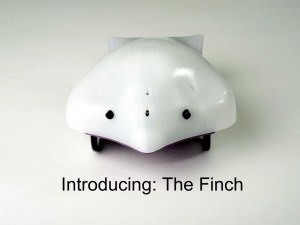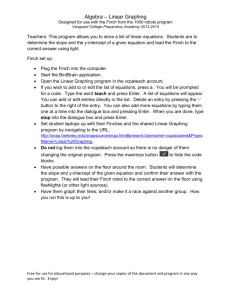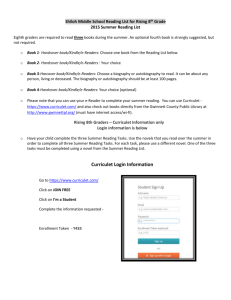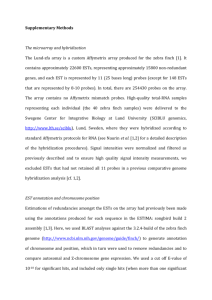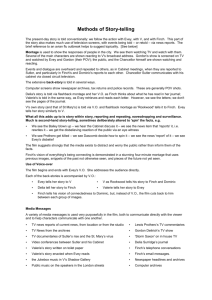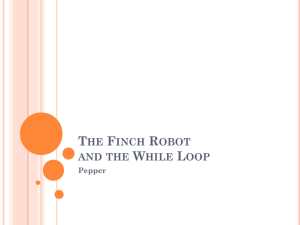powerpoint - Mrs-oc
advertisement
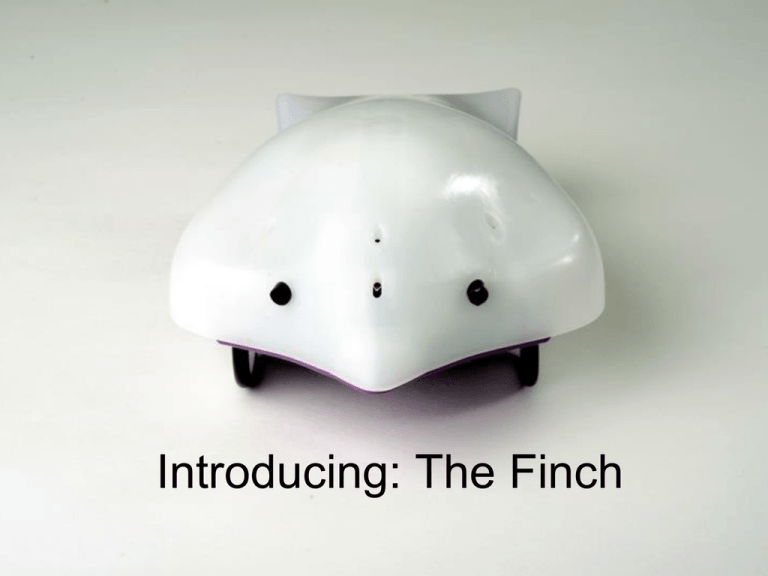
Introducing: The Finch Low-cost Personal Robot $99 Sensors and Connections The Accelerometer controlling LED output Sensors and Outputs Sensors • • • • • • • • • • Sensors The Finch is capable of sensing ambient light levels, temperature, obstacles placed in front of it, and acceleration. Light. The Finch uses two photoresistors to detect ambient light levels. These sensors are analog with 8 bits of resolution and can easily differentiate sunny and cloudy days and brightness of various indoor light sources. These sensors are commonly used as either input devices or to allow the Finch to track towards or away from light sources. Temperature. The Finch has a single thermistor sensor that detects the ambient temperature. The sensor can also determine the temperature of an object if the object is placed in contact with the sensor. The temperature sensor is accurate to within 2 degrees Fahrenheit. Obstacle Detection. The Finch has two Infrared sensors. These sensors can detect obstacles in front of the Finch. The sensors are digital and so act as virtual bumpers - they do not provide information on the distance to an obstacle, but simply register whether an obstacle exists. The sensor detection range is between 3 and 12 inches. Due to the limitations of this type of sensor very narrow objects or objects made of certain black plastics may not register as obstacles. Accelerometers. The Finch uses a Freescale MMA7660FC 3-axis MEMS accelerometer to detect acceleration. The sensor can detect accelerations of +/- 1.5 gees. The primary use of the accelerometer is to detect the direction of gravity, so as to know how the Finch is oriented (flat on the ground, upright, etc). It is also possible to detect spikes in acceleration caused by tapping or shaking the Finch. Motors • The Finch has two gear motors and uses its tail as a slide caster. It can turn in place around the axis of the motor's shafts. The wheels are press-fit onto the motor shafts. The Finch's top speed is roughly 15 inches per second. Robustness (click to play video) Programming • Current: – – – – – – – Java Python/Jython Javascript (beta) Processing Visual Basic Scala C++ • Soon: – Labview – Alice-like – Scratch-like Getting Started: • Detailed instructions and a screencast at: – http://www.finchrobot.com/getting-started • Boils down to: – Select your favorite IDE and download the Finch package – Follow Instructions to Run Finch Package in the IDE: http://www.finchrobot.com/creating-compiling-andrunning-programs-finch – Take a look at the examples as well as the Javadocs
